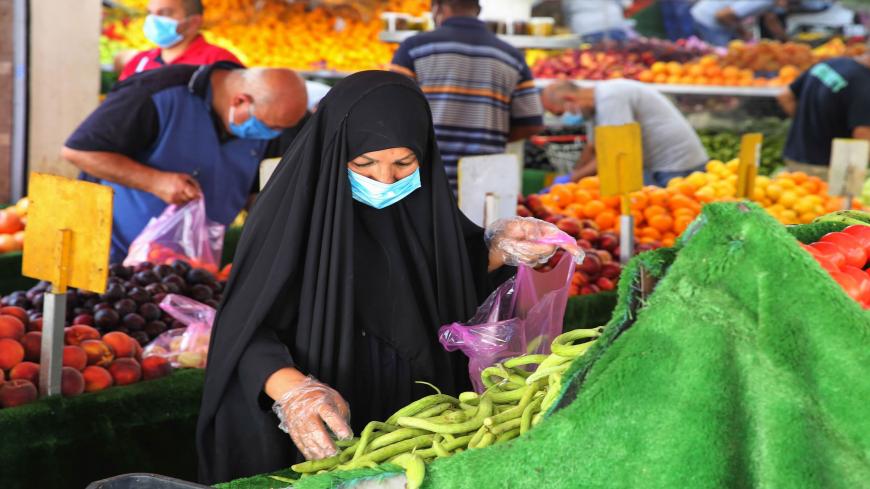While we are very much still in the middle, or even at the outset, of the economic impact of the coronavirus pandemic and lower oil prices across the Middle East, there are some troubling signs that recovery will be more difficult than in other emerging market regions. The early evidence suggests that we will see significant variation in economic growth, with Asian economies already showing stronger resilience than Latin America or the Middle East.
On July 13, the International Monetary Fund released its updated economic outlook for the Middle East and North Africa, with a downward revision in (already negative) growth for oil exporters in 2020 to -7.3% decline in real gross domestic product (GDP), before returning to positive growth of about 3% in 2021. This amounts to a loss in oil export revenue to the region of about $270 billion in 2020. For oil importers in the region, the decline in expected growth is more moderate, at -1.1% for 2020 before returning to feeble positive growth of under 2% in 2021.
But in a cross-regional perspective, it is emerging markets that will lead in economic recovery in 2021 as a percentage of GDP, according to projections by Fitch Solutions that sees developed economies taking the hardest hit to growth in 2020. The current sharp recession we see globally will not last forever. The question is how unevenly growth returns and what governments can do to shield citizens from the worst of the downturn and amplify what sluggish growth returns.
Interestingly, as emerging economies are expected to fare better in their pace of recovery starting in 2021, the divergence within emerging markets is striking. It is economies in Asia that are expected to rebound more quickly and with higher annual growth rates than in the Middle East or Latin America. And the drag on growth rates in the Middle East as it recovers in 2021 will be due to the sluggish recovery of oil exporters, mostly in the Gulf Cooperation Council (GCC) states.
For the region, the Gulf oil exporters are both a source of foreign direct investment and remittances, as well as a bellwether of regional growth. Because their recovery is so sensitive to the coronavirus pandemic, in diminished demand for oil and gas as global transportation continues to lag, along with tourism — from religious tourism in Saudi Arabia to the beach resorts of Dubai — and the impact of declining demand in their own local retail and real estate markets, the GCC states are likely to experience a slower and lower growth acceleration in 2021. In terms of their ability to sustain financial intervention via aid and investment toward the wider Middle East, the Horn of Africa and beyond, it is too early to tell. But what's clear is that government project spending is contracting in real estate and infrastructure projects, which traditionally means an overall contraction in Gulf economies and tends to trickle down to labor market retrenchment, reduced opportunities for foreign workers, with lower wages and remittance flows.
While populism poses a significant threat to economic recovery across developed economies, for the economies of the Middle East, the underlying structural weaknesses are more damning. Youth unemployment, lack of fiscal space to create needed stimulus for business — or to even provide electricity in Lebanon — and expand social services, along with poor access to capital all converge under the pressure of a recession caused by the coronavirus crisis. We will see pressure on governments and corporations to access debt financing and restructuring of existing debt; but here again, there is a divide between the wealthier oil exporters and struggling oil importers of the region. The United Arab Emirates, Saudi Arabia and Qatar continue to dominate regional debt issuance, making up 84% of regional market issuance in the first half of 2020, according to data from First Abu Dhabi Bank.
Access to international debt capital markets will be essential to the region's recovery. There will be divergence in that access, as well as some difficulty in relying too heavily on local and regional banks. Gulf banks have proven an important source of finance to the region, as evidenced by Egypt's interest in tapping into regional lenders. This is why, for example, that Iran may be in a corner — both in its domestic politics and in the economic utility — in its touting of a great deal with China. There is simply no other lender, regional or international, that can help Iran. And Iran's local banks are in no position to bail out quasi-state entities. But what Iran needs — but cannot get — will be privatizations of state assets and ways to raise alternate sources of government revenue. China is not a good partner for that kind of capital raising.
Besides access to capital and the ability to soften the blow to fiscal deficits with some restructuring and privatizations, the economies of the Middle East and North Africa will have to deal with two essential socio-economic effects of the pandemic: backtracking in women's labor force participation and empowerment, and a threat to gains of a demographic dividend. First, the she-cession to come. Women have made substantial progress across the region in their advancement in higher education and improved access to health care. The reality of the coronavirus crisis on women globally is that their careers will suffer as family dynamics demand more of their time and employers see women as more disposable. Second, the youth bulge of the Middle East is an asset, but it is an aging one. The pandemic threatens the region's ability to gain from a demographic dividend, the boost to economic development from a youthful population ready to engage productively in the labor force. Being left out now means years of loss to come for a generation of young people already frustrated with lack of opportunity. For fiscal policy, this is a disaster that even the wealthy Gulf states cannot avoid as a mounting problem of generational equity. As the youth bulge ages, it becomes more of a burden to government spending, in required health care, housing and social spending.
Economic recovery across emerging markets looks positive, but stratified by region in 2021. The story in the Middle East is more complicated, with recovery in the Gulf permeating possibilities across the region. Outliers like Iran will be under more extreme pressure. But across the board, the Middle East is bound by its demographics, and the burden of recovery will be on governments to recognize the risk to its best potential for growth: women and young people.







